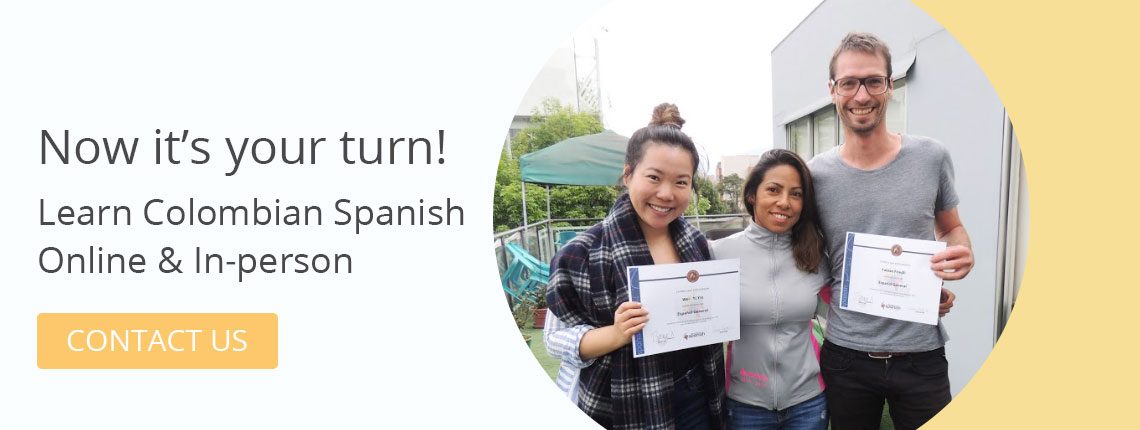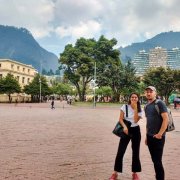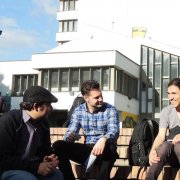Colombia’s unique Coffee culture
As you might know, Colombians are proud of their country, traditions, and food, but above all… they are proud of their coffee.
How would Colombia be without its coffee?
Hard to imagine…
Coffee in Colombia is more than just a drink; it’s an essential part of our culture. Coffee is the first-morning drink for many; it is the drink that brings family, friends, and acquaintances together and is one of the products that contribute the most to the national/rural economy.
Colombian coffee is unlike any other coffee in the world (we might sound biased, but it is true!). The country’s unique geography, climate, and environment enable it to produce unique flavors of the highest quality.
Colombia has been producing coffee since the plant was introduced to Latin America in the 1700s by Jesuit missionaries. Colombians have become passionate about growing coffee, leading us to be the third largest coffee producer in the world (after Brazil and Vietnam), and the world’s top producer of washed Arabica coffee beans.
What makes our coffee so unique?
Colombian coffee is renowned worldwide for its high quality and delicious taste.
Three factors determine the quality of coffee. Colombia is remarkable in all those three:
1. Colombia’s unique geography and climate
Coffee is a very sensitive crop; it needs just about the perfect conditions to grow. Although all different, Colombia’s coffee regions enjoy an excellent climate, rich soil, and the perfect amount of rainfall – with just the right amount of sunlight, too.
The fertile soil of the Andes mountains, which crosses the country from North to South in three parallel mountain ranges, creates an ideal environment for growing our renowned Arabica coffee.
2. The growing and harvesting process
It’s not enough to have the perfect climate and geographical conditions. If the growing and harvesting methods are not ideal, the quality of the coffee will be poor.
Colombian coffee, in general, is grown on steep slopes, surrounded by trees – in most cases by banana plants – which provide shade and prevent the beans from being scorched in the sun.
These terrain conditions lead to harvesting the coffee ONLY by hand, not with machinery. Yes, every coffee bean in Colombia is picked by hand.
This process makes a huge difference in the quality of our coffee. A machine cannot tell the difference between green beans, unripe beans, overripe beans, and the ideal coffee cherry. But a person can.
More than 600,000 coffee producers in Colombia passionately pick every bit of their harvest by hand, making sure they pick and separate the best beans.
Bad beans are still processed and end up in the local market, while top-quality beans are destined for exports. However, in the country’s capital city and other major cities, there has been an increase of local specialized coffee shops purchasing high-quality beans to produce the best coffee for local consumption.
3. The type of coffee
The other important factor in determining the quality of the coffee is the type of coffee.
There are two different coffee bean types: arabica and robusta, and new varieties are produced within those two species. Colombia is one of the only countries that produce 100% arabica beans.
Arabica is considered to be the superior bean. It is a plant that requires special conditions to grow properly. When processed, its most notable characteristics are enhanced, such as hints of fruit and berries, a slight/mild acidity, some notes of chocolate, caramel, and nuts, and just a little bitterness.
These qualities make it the best-tasting coffee in the world.
Colombian coffee regions
In Colombia, coffee is produced from the north, in the Sierra Nevada to the south, in the Nariño region.
However, there is a particular area occupying the departments of Caldas, Risaralda, and Quindío, which is worldwide known for its landscapes, coffee culture, and unique and colorful “fincas cafeteras” (coffee farms). It is known as the Coffee Region, The Coffee Triangle, or the Coffee Axis.
This region has a special charm. You will be amazed by the impressive green and mountainous landscapes, endless coffee plantations, and unique colonial houses with colorful wooden balconies and flowers. It’s a harmonious model of agricultural exploitation that coexists and takes care of the environment and people. The reason why is that this region has been a UNESCO World Heritage Site since 2011 as “Coffee Cultural Landscape.”
This might be the most known coffee region in Colombia. However, other regions have specialized in high-quality and single-origin coffee. Some of them have won the award for the best cup.
Some names you will ll frequently see are: Quindío, Cundinamarca, Tolima, Nariño, Huila, Santander, and Sierra Nevada de Santa Marta.
Colombia’s Coffee Culture
As we mentioned at the beginning of this article, coffee in Colombia is more than just a drink option. Coffee is part of our cultural identity. It’s an essential part of our culture and the Colombian rural economy.
For some people in other parts of the world, coffee is a morning drink to get them through the day. For us, coffee is a social drink.
We also drink coffee in the morning to start the day, but we also drink it when visiting friends or family.
When we want to catch up with an old friend or ask someone for a date, we usually ask them to go for a coffee.
When you arrive at someone’s office, the first thing you get asked is if you would like a cup of coffee. And, if you want to meet up with someone for an informal business meeting, you can set it at any local coffee shop.
That is why, contrary to other countries, Colombian coffee shops’ popular times are between 3 pm and 7 pm.
In short, whatever we do involves coffee!
Colombian Coffee Vocabulary
If you want to embrace our culture, one of the first things you should do is get familiar with the coffee vocabulary.
The most important word you need to learn is “tinto.” It refers to traditional black coffee. A tinto is generally small, about 4-6 ounces. It’s not usually intense and often sweetened with panela (sugarcane).
As we just mentioned, you’ll be offered coffee everywhere when you visit Colombia. Get ready to hear:
- “¿Quieres un tintico?” or “¿Le provoca un tintico?”
(Would you like a coffee?).
If you want to order, then you should learn:
- “¿me regala un tinto, por favor?”
(Can I have a black coffee, please?)
Always accompany that request with “por favor” (please). Colombians are very polite. Thus words like “gracias” (Thank you), “Por favor” (please), and “Con gusto” (My pleasure) are very well appreciated!
Cultural Tip:
When you say “Me regala” it doesn’t mean you will get it for free. This is just a common expression in Colombia when people ask for something or a favor.
Coffee options:
- Tinto: Black coffee
- Tinto campesino: Black coffee sweetened with Panela (sugarcane)
- Café con Leche: Coffee and milk
- Perico: Coffee and milk (popular term used as an alternative to Café con leche)
- Granizado – Coffee slush
- Nevado – Frappuccino
- Carajillo – Coffee with aguardiente (Colombia’s alcoholic drink)
- Descafeinado – Decaffeinated
- Capuchino – Capuccino
Coffee Sizes
- Pequeño – Small
- Mediano – Medium
- Grande – Large
Milk Options
- Leche entera – Whole milk
- Leche semidescremada – Semi-skimmed milk
- Leche de almendras – Almond milk
- Leche de soya – Soy milk
- Leche deslactosada – lactose free milk
The best way to learn about Colombian coffee is by visiting the country, meeting new people, and drinking all kinds of coffee!
If you are in Bogota, visit any of these specialty coffee shops, and try the coffee tasting some of them offer.
And if you want to learn Spanish or improve your current level, join any of our classes, online or in-person.
Don’t forget to read our weekly Blog and follow our Social media to learn more about the Spanish language and Colombian culture.
See you soon!











